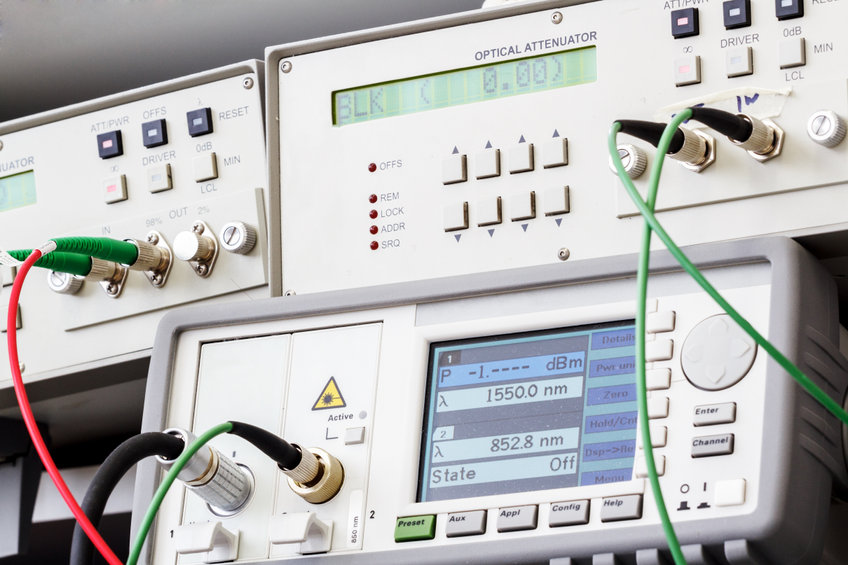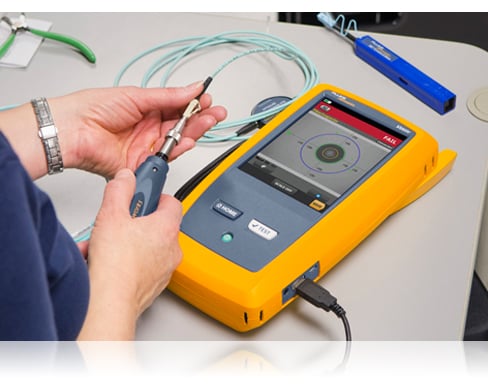Ofda plays a key role in accurate fibre measurement in different applications.
Discovering the Benefits of Optical Fibre Examining for Improved Communication Equipments
The significance of optical fiber testing in modern communication systems can not be overstated, as it offers as a foundation for ensuring network dependability and efficiency. This positive testing method has extensive effects for signal high quality and functional efficiency, increasing the concern of just how these practices contribute to long-lasting sustainability in an ever-evolving technological landscape.
Relevance of Optical Fibre Testing
The significance of optical fibre testing can not be overemphasized in today's data-driven environment. As organizations progressively count on high-speed data transmission for everyday operations, the integrity and performance of optical fiber networks are critical. Checking makes certain that these networks can sustain the large quantities of data produced and transferred perfectly, fostering reliable communication and connection.
Optical fiber testing serves multiple critical functions, consisting of validating setup top quality, recognizing potential faults, and determining total system efficiency. Routine testing can protect against costly downtimes and service disturbances, permitting organizations to maintain functional continuity. Additionally, it assists in compliance with industry standards and policies, ensuring that fiber optic setups meet called for specs for safety and security and dependability.
Furthermore, screening can enhance the long life of fiber optic systems. By proactively recognizing concerns such as signal loss, attenuation, or adapter failings, organizations can address problems before they rise, hence prolonging the life of their infrastructure. In recap, optical fibre testing is not just a technological need yet a tactical financial investment that enhances network reliability, enhances efficiency, and ultimately supports the growth and efficiency of contemporary communication systems.
Key Examining Methods

OTDR is a vital method utilized to identify mistakes, action splice losses, and analyze the overall stability of a fibre optic web link. By sending out a pulse of light down the fibre and examining the mirrored light, service technicians can determine locations of faults and assess the network's efficiency over lengthy ranges.
Insertion loss screening gauges the quantity of signal loss that takes place when light passes through a link or splice. This approach is essential for verifying that connections meet specific loss limits, which is essential for preserving optimum performance in interaction systems.
Optical return loss screening quantifies the quantity of light showed back towards the source because of blemishes in the fiber or connections. High return loss worths indicate much better efficiency and reduced signal deterioration.
Together, these screening techniques give a thorough evaluation of fiber optic networks, guaranteeing their integrity and functionality in diverse interaction applications.
Influence On System Efficiency
Efficient optical fiber testing straight affects the overall performance of communication systems. By making sure the integrity of fibre optic cable televisions, testing identifies possible mistakes such as depletion, splice loss, and adapter misalignment. These problems can considerably weaken signal quality, leading to disruptions and decreased information transmission speeds.

Furthermore, regular optical fiber screening contributes to long-lasting system sustainability. It enables very early detection of damage, enabling prompt upkeep and upgrades prior to significant failures happen. This not only lengthens the life expectancy of the framework however likewise makes sure that interaction systems continue to be competitive in regards to performance.
Cost-Effectiveness and Effectiveness
Cost-effectiveness is an important consideration in the implementation and upkeep of optical fibre networks. Executing durable optical fiber testing treatments can considerably minimize functional prices by identifying problems prior to they escalate into major troubles. robotic vision. By discovering faults, attenuation, and various other performance limitations early, companies can stay clear of costly fixings check my site and downtime, which can disrupt services and result in profits loss
Additionally, effective testing methodologies improve the installment procedure, permitting technicians to function a lot more effectively. This equates to decrease work prices and faster project conclusion times. Advanced screening tools, such as Optical Time Domain Name Reflectometers (OTDRs), enables an accurate assessment of fibre top quality, guaranteeing that only optimum materials are made use of, thus minimizing waste.
Routine testing also adds to better resource allocation. By comprehending the network's performance, organizations can make enlightened decisions concerning upgrades and developments, guaranteeing that financial investments are made where they are most needed. In recap, optical fiber testing enhances cost-effectiveness and effectiveness, supporting the long-lasting sustainability and competition of communication systems in a progressively requiring informative post market.
Making Sure Long-Term Reliability
Executing extensive optical fiber testing not just boosts expense savings and functional effectiveness but likewise plays an essential role in making certain the long-term reliability of communication networks. Constant screening practices, consisting of depletion and data transfer evaluations, aid recognize potential deterioration in fibre efficiency prior to it brings about solution disruptions.
By utilizing advanced testing techniques, network drivers can identify faults or weaknesses in the fibre infrastructure, enabling timely remediation. This positive strategy minimizes downtime, ensuring that communication systems remain practical and effective. Regular testing adds to the development of a much more resilient network, as operators can adjust and enhance their infrastructure based on real-time data insights.
Additionally, making certain conformity with sector criteria through optical fibre testing enhances the quality and honesty of the entire communication system. This adherence not just bolsters confidence amongst stakeholders but additionally lines up with governing needs, which are significantly stringent.
Conclusion
In final thought, optical fibre testing serves as a basic element in boosting communication systems. By using various screening approaches, such as OTDR and insertion loss linked here analyses, networks can achieve optimum performance and reliability.